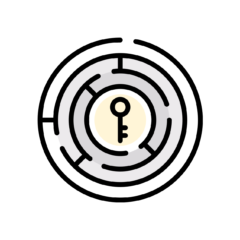I live and work in the Seattle tech market, which is generally booming right now. That being said, the relatively new CEO of Microsoft alluded to some major restructuring last week in a memo. It has to do with streamlining after the Nokia acquisition, with global impact. The details and actions started coming out today, with an estimated 1350-1400 full time employees being impacted facing position eliminations in the Seattle metro area. I have already received five communiques from impacted employees or people re-evaluating their desire to remain there.
I’m not writing specifically about the Microsoft impact. What I’m hoping to help people understand is simply that the earlier you become proactive about impending cuts and changes, the more likely you will have a place to land. The folks that send me their resumes within a day or two of needing a new job are the ones that have a better chance of getting into process with other employers.
The truth of the matter is that beyond a certain point, once a candidate pipe is relatively full (usually within the first 2-3 weeks of a position opening) the chances of latecomers being considered for the position become slimmer.
Let’s say I open a marketing manager position on July 20th. I post the job on LinkedIn, Twitter, maybe a couple of job boards. Then I look at the employee referrals and prior candidates that were a good fit but not the top candidate for a similar role. I search in my Applicant Tracking System for candidates that have applied to other roles in the last six months. I reach out to professionals on LinkedIn via LI Recruiter. This is all in week 1.
During week 2, I am getting responses, sharing resumes or LinkedIn profiles with the Hiring Manager, and starting to set up phone screens for me and the hiring team.
By weeks 3 through 5, we are continuing with phone screens to identify the top 2-3 candidates to bring onsite and scheduling interviews. Once we have those viable candidates, we put a relative "hold" on new candidate activity unless they are a *perfect fit* for the position.
Weeks 6-8 should generally include an offer.
Granted this is a relatively perfect scenario, but it is more the norm than not, especially in a healthy economy with a lot of candidates. If there are no viable candidates in the first wave of activity, we generally do a "lather, rinse, repeat".
It is unfortunate that far too many people are in shock (and denial) after a job elimination. Many candidates will try to take some time, assess the damage, and develop a plan. There is nothing intrinsically wrong with this approach, except for the fact that the 22 other people with your same basic qualifications from your former company have not waited, and they are all vying for the same 4 positions that are currently open. They are networking, their LinkedIn profiles are up to date, they have a working copy of their resume, and they are actively applying for those openings.
2008 wasn’t that long ago, and many people and job markets are still recovering. You don’t know if or when another position will open up for your skill set. Do you have the recommended 6 months in savings to cover that contingency?
B >
